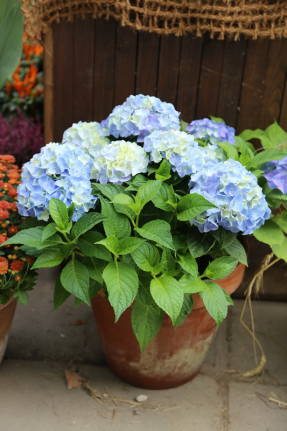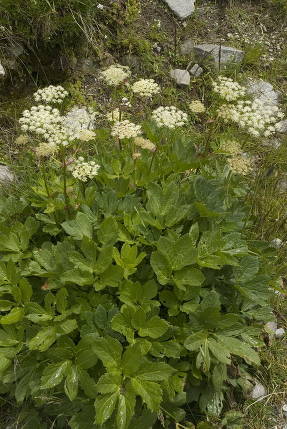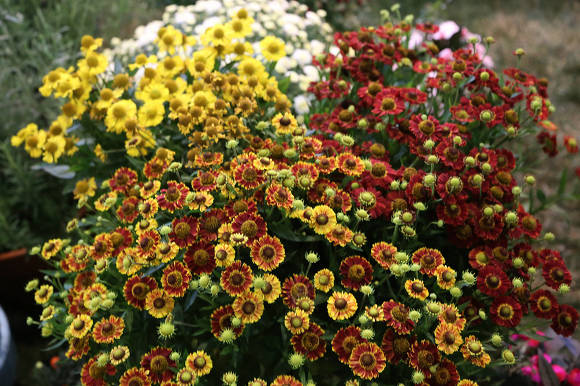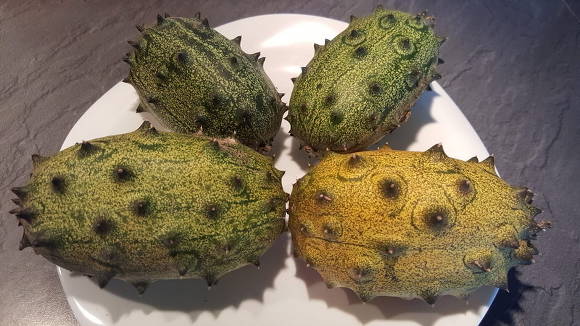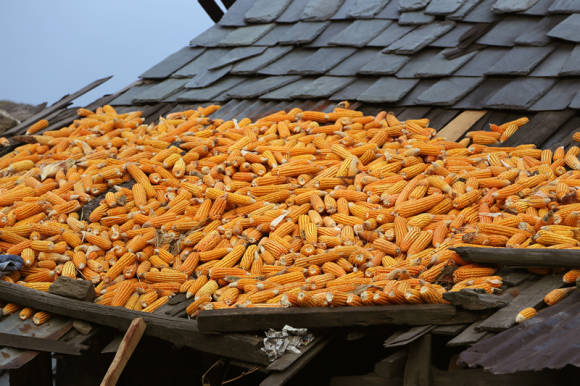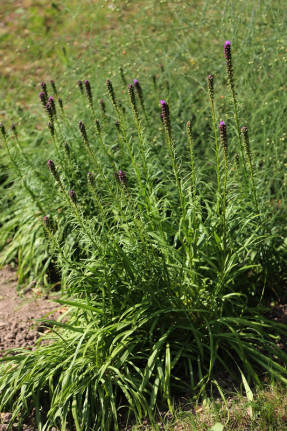At the beginning of spring, it is still difficult to judge and objectively assess the state of our garden plants after overwintering, although no critical moments were noted this year. Definitely, those who provided plants with good watering in the fall have much less cause for concern. Well, if some plants are in no hurry to bud bud or this phase of the initial vegetation is not very active, it is too early to draw a sad conclusion about the death of the bush and pass a sentence - to grub up! You have a constant friend - a pruner, who will help you understand the causes of plant malaise. If the shoot is green on the cuts, it means it is alive, and even if the visible buds die, the bush can recover at the expense of the daughter (sleeping) ones, which are simply not visible to the gardener. But such regrowth will be much later in time. Your task is to help the plant in such recovery: to provide additional nutrition and moisture. Brownish shoots, which are also determined by the cuts, of course, are not already capable of recovery due to damage to the vascular (conducting) system. And the tissues and core can turn brown not only from freezing, but also from drying out the shoots. In this case, it is possible to restore the bush only due to the regrowth of new basal shoots, if the root system is alive. For this, the above-ground part is cut out almost all the way down to the ground.
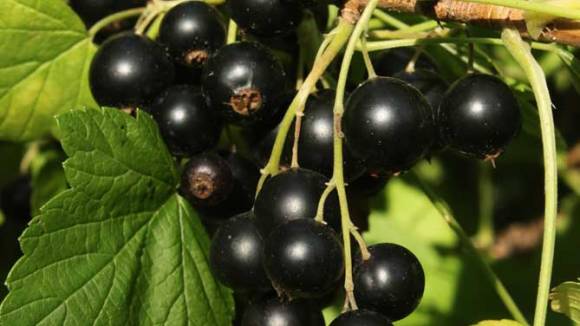
The viability of the root system can be judged as new shoots appear, which, with optimal care, reach the height of a normal bush by autumn. It remains with pruning shears to correct the quantity and quality of the left shoots (no more than 5-7 pcs.), And next spring to shorten them by 1/4 of the height for their better branching and fruiting. In the worst case, the root system could also freeze out, since the degree of soil freezing at each site is different (some kind of protection from buildings, better snow accumulation, a garden under the forest canopy, different moisture content before leaving for winter, etc.).
It is better to plant currants in the fall - until mid-October, since in the spring the buds wake up too early in it and the plants experience unnecessary stress during transplantation. Contrary to our advice, gardeners are stubbornly reorganizing for a spring planting. Your will, and this option is not excluded. Publications on cultivation technology, including planting, are found annually in different publications. But the army of gardeners grows annually, and not all "beginners" are familiar with agronomy. Therefore, very briefly about the most important points of landing, you still have to repeat.
Choose a planting scheme right away, since correcting it with growing plants is troublesome. It is much easier to care for currants and pick their berries with a sparse planting (preferably at the edges of the plot) with a distance between rows of at least 2 meters, and between bushes in a row - 1.2-1.5 m. With this planting, currants are less sick and bear fruit more abundantly.
Planting holes are dug for the volume of the future root system (60x60x60cm), which, before planting, it is advisable to fill with organic fertilizers with the addition of mineral fertilizers (2 buckets of humus, compost or peat, 0.3-0.5 kg of superphosphate, 0.5 kg of wood ash - everything is mixed and filled up into the pit, filling it with fertile soil completely.
Immediately, abundant watering is done, regardless of the moisture content of the soil, so that the earth settles and possible voids are filled with soil during planting, and the planting depth is also adjusted. Plants are cut at a height of 20-25 cm from the soil surface, that is, leaving no more than 4-5 buds (depending on the length of internodes on the stem).Such pruning maintains the optimal ratio between the root system that has not yet taken root and the aboveground part (in the spring, the leaf apparatus of the seedlings is preserved!). The most important task of such pruning is to stimulate the formation of lateral shoots (branches) in the lower zone of the bush - carriers of future crops, on which fruiting wood will form. The soil under the bushes is mulched with peat or humus to retain moisture. If necessary (according to the weather) - watering is repeated. In order not to lose the planted plants, it is advisable to mark them with labels. By the fall, good bushes are already growing, which in subsequent years, according to the characteristics of the variety, will form a full-fledged bush. And the varieties still need to be chosen according to their tastes and, preferably, with the advice of specialists.
According to our long-term observations of varieties, a zoned assortment is formed, which changes much less frequently than we wish, since varieties become obsolete before there is interest in a newer one. And the work of breeders does not stand still, they are always on the lookout for breeding varieties with better qualities than that of the previous generation. Today we invite you to familiarize yourself with the varieties of our selection (Sverdlovsk selection station of gardening) and introduced (foreign), which emerged after many years of observation as more reliable and better in terms of economically valuable characteristics.

To obtain stable yields on the planting site, it is necessary to choose varieties of different flowering periods in order to avoid massive damage to flowers and ovaries from spring frosts.
- Among the earliest in flowering and ripening is the variety Good Genie - selection of the Sverdlovsk selection station of gardening. Highly winter-resistant variety with 68% self-fertility, providing high and stable productivity. The bushes, depending on the growing conditions, are medium or vigorous, medium spreading, the cluster is medium or long with a loose arrangement of berries. Berries are black, rounded, large (average weight 1.8, maximum -5g), irregular in size, with a very thin and delicate skin, excellent taste. As a rule, they are consumed more fresh, but they are also suitable for all types of processing. When ripe, they do not crumble, the separation is dry.
Kind Djinn belongs to the group of the most resistant varieties to kidney mites and powdery mildew. Propagates well by layering, green and lignified cuttings
- Chant Ural - a variety of selection of the Sverdlovsk CCC, early flowering, ripening - in the middle. Bushes are vigorous, semi-spreading. The variety is fast-growing, with a self-fertility of 53%. The brush is medium with a loose arrangement of berries. The berries are large (average weight 1.7 and maximum -5.0 g), pleasant sweet and sour taste with delicate skin.
The variety is resistant to powdery mildew; in some years, in aging plantations, plants may be slightly damaged by a bud mite (up to 0.5 points). It reproduces well in all available ways.
- Fortune - bred at the Sverdlovsk gardening selection station. Variety of early-middle flowering period, ripening - late, extended. The bush is medium or vigorous, it is distinguished by the rapid formation of the bush and early entry into fruiting, high self-fertility (63.0%), providing a high and stable yield. Brush of medium length with loose berry arrangement. The berries are large (average weight - 1.6 g, maximum - 6.0 g), pleasant sweet and sour taste, with a high degree of one-dimensionality. Resistant to powdery mildew and kidney mites. It reproduces well in all ways.
- globe - a fairly well-known and widespread variety among gardeners, bred in the Sverdlovsk SS. The variety is winter-hardy, highly self-fertile (67%), vigorous. Very compact with straight, thick shoots. At a young age, it is characterized by restrained growth and moderate yield.As the fruiting wood grows, the yield increases and remains high until the end of the fruiting period. Variety of average flowering and ripening period. Rounded berries on clusters of medium length, large (average weight - 2.0 and maximum - 6.0 g) with a high degree of one-dimensionality. Dessert taste, more suitable for fresh consumption. At a young age (before fruiting) in damp years, signs of powdery mildew may appear. Minor kidney mite damage appears on aging bushes. Reproduces well by green cuttings. Lignified cuttings and cuttings take root slowly and are distinguished by moderate growth in the year of rooting.
- Pilot - one of the best varieties of the last years of selection of the Sverdlovsk CCC. Variety of early-middle flowering period, berry ripening - later. The bush is medium to vigorous. Differs in early maturity, high and stable yield. Self-fertility is high (66.0%). The brush is medium with a loose arrangement of berries. The berries are large (average weight 1.5 g, maximum - 5.0 g), with a high degree of one-dimensionality, with a dense, but not rough skin. The taste is sweet and sour, it improves with a slight overripe. The berries do not crumble until fully ripe on the bush, the separation is dry. Highly resistant to powdery mildew and kidney mites. It reproduces well in all ways.
- Pennant - introduced to the Sverdlovsk SSS. High winter hardiness and self-fertility (63.0%) provide a stable yield. Bushes, with good care, are vigorous, compact, with a heavy crop load - slightly spreading. The brush is long with a loose arrangement of berries. Berries are large with an average weight of 1.4 g and a maximum weight of 5.0 g, with a high degree of one-dimensionality. The berry taste is very delicate, dessert, more suitable for fresh consumption.
The Vympel variety is highly resistant to powdery mildew and kidney mites. It propagates well by layering, green and lignified cuttings.
- Slav - bred at the Sverdlovsk gardening selection station. This is one of the universal varieties suitable for growing in any type of plantation and combining high resistance to fungal diseases and pests, including kidney mites.
The bushes are medium-sized, rather compact with elegant healthy foliage until late autumn. Often they leave in the winter with un-fallen leaves, this is in no way connected with the winter hardiness of the variety. Winter hardiness is high, which, in combination with good self-fertility (70%), provides the variety with a stable and high yield.
Flowering period - late, berries ripening - average. Clusters of medium length with a loose arrangement of berries, one-dimensional in size and rather large (average weight 2.0 and maximum - 2.5 g). The berries are round, with a very pleasant dessert taste, not crumbling on the bush until fully ripe. The variety is suitable for fresh fruit consumption, although it is used with the same success in any kind of processing. Aging bushes can be slightly damaged by a bud mite. All breeding methods are suitable for the Slavyanka variety.
- Beauty of Lviv - the variety was bred in LF IS UAAN (Ukraine). This is one of the many introduced varieties of black currant, which stood out as the best in terms of the main economically valuable traits. A variety of late flowering and ripening berries. Differs in high winter hardiness and self-fertility. The bush is vigorous, compact. For all the years of observation, there were no lesions with powdery mildew, and only single buds on individual bushes (0.1-0.5 points) were damaged by the kidney mite. The brush is long with large one-dimensional berries (average weight 1.6, maximum - 5.0 g), pleasant sweet and sour taste, does not crumble until fully ripe on the bush, separation is dry. It reproduces well in all ways.
Of course, the selection of varieties is not limited to this list. Many of the best varieties from the old assortment are propagated. Varieties such as Gross, 147-1/182, Pygmy - have long been known and loved by gardeners. Their characteristics have been repeatedly presented in publications over the past years, and they, of course, are quite worthy of attention. In addition, there are a lot of varieties of new, promising, reliable, but so far not having the status of a Variety, therefore, they are multiplied in limited quantities (Prospector, Cavalier, Tarzan).
All of the listed varieties are uniquely highly winter-resistant and productive, therefore it is very difficult to talk about a specific yield. Each gardener, according to his desire and skill, creates growing conditions for each crop, including currants.
Of course, even in one variety, there can be differences in yield that are quite significant in different gardens. According to our observations (in experimental plots), under optimal conditions (in the absence of serious damage by frost or pests), it is not uncommon to collect 5 to 10 kg from a 5-6 year old bush from a bush.
And other indicators are largely determined by the growing conditions. Large-fruited is a varietal trait that remains in the variety in any case, but it is quite mobile, depending on the load of the crop, the level of nutrition and moisture, the age of the bush, etc.
Taste qualities are also determined by weather conditions during the period of crop formation. As a rule, in cold and rainy weather, the berries are more acidic during ripening. The degree of damage to plants by diseases and pests in collective gardens can also vary depending on the infectious background. As a rule, in individual gardens, protection measures are minimized, especially in collective ones, where the isolation of plantings is practically impossible. And the gardener takes up drugs only when there is a serious threat of crop loss. The offered varieties are distinguished as the most resistant to common pests and diseases.
Of the listed varieties, among the most large-fruited with a high degree of one-dimensionality are: Gross, Chant Uralsky, Fortuna, Globus, Pilot, Vympel, Krasa Lvova, Tarzan, Prospector, with non-uniform berries - Good Djinn. The varieties with a dessert flavor of berries include: Dobry Djinn, Globus, Vympel, Slavyanka, 147-1 / 182.
Choose, Plant, Grow!
Based on materials from the newspaper "Ural Gardener" No. 17, 2012
